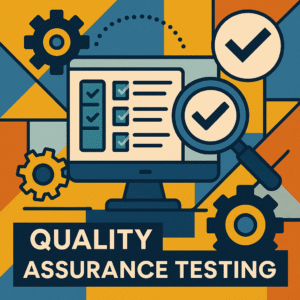Why is it Critical to Check Security during API Testing?
The $13.7 billion acquisition of the Whole Foods Market by Amazon is shaping a dynamic platform that channels diverse services and processes. By leveraging Cloud and APIs, Amazon is offering technologies and process innovations beyond the confines of the organizations. Digital connectivity and new age technology trends is amplifying the significance of Application Program Interfaces (APIs) – intensifying the need for API Testing. A well-programmed API helps build a program smoothly by developing the building blocks for the programmer to weave together.
APIs comprise a set of routines, protocols, and tools for developing software applications. APIs are also used for GUI; some of the popular API examples are Google Maps API, YouTube APIs, Twitter APIs, and Amazon Product Advertising API. These APIs mainly help developers to integrate various functionalities within the websites or applications. For instance, Google Maps API facilitates developers to embed Google Maps on webpages.

Implications of API spill for businesses
Practically, if you intend to extend any kind of innovative services or facilities to your customers, APIs are indispensable.Whether it is extending an ecommerce platform to your merchants, or offering a range of activities across a single integrated platform; APIs make it feasible. They facilitate easier interface with the target audience by enabling connectivity and supporting developers to work on new products and enhance customer experience.
The financial services industry holds massive amount of customer data. APIs support them to extend new tools to their business partners and employees to streamline operations and data. At an enterprises level, APIs are used within enterprise applications to obtain details about customers/partners.
However, very less thought is given to the security around the API. This could incur risks.
The surface for API attacks is pretty large, where the applications are segmented into micro-services with a large number of interfaces. This can expose the applications to external attacks, leading to leak of sensitive data.The risk is valid for any and every application – financial services, banking, or ecommerce. Exposure of business-critical or customer-sensitive data is a major concern for enterprises and business today.
In this way, Hackers, internal threats, and bad bots can pose a threat to your API security on every single day. In 2013, Snapchat’s API was hacked by an Australian hacker group and published. This exposed the user’s phone numbers, display names, usernames, and private accounts. The API exposure and publication could even get handy for someone to create the Snapchat clone and gather information of millions of users.
Why is API Security Testing so critical?
APIs can drastically reduce the time required for developing new applications and the developed applications will perform in a consistent manner. Hence, testing APIs helps skip maintaining the API code, which reduces costs.
In an application, when compared with other components, API is the weakest link for a hacker to dig in for data breach. API Security Testing ensures that the API is safe from vulnerabilities. In case of an individual application it might just affect the application, however, if an API is hacked, it can affect every application dependent on that API. API hack of an application can create havoc at an organizational level and lead to major losses for your organization.
Thus, ensuring the security of these applications is critical and functional tests would not suffice. Various scenarios need to be simulated to weigh the attacks across diverse scenarios. This will help diminish the impact of external forces on the API. It is a tricky situation and the tester needs to think out-of-the-box situations and simulate them to test the APIs. It is equally important to understand the kind of security problems to address while testing the security aspect.
Moreover, the key advantage of API testing is ability to access the application without a user interface. It helps expose the minute errors that can lead to issues during GUI Testing. When the core is accessed, it helps testing alongside development, encouraging communication, and ensuring better collaboration.
What are the Best Practices for API Security Testing?
With the dominance of Digital Technologies and the threats associated with it, there is no chance that you can ignore your APIs. However, most of the times while building an application security takes a back-seat. API Security Testing should take a much stronger and strategic approach.
So, how should organizations go about testing API vulnerabilities?
Following are some best practices that can be considered while testing vulnerabilities.
- Firstly, it is essential to check the expected output. The input to the API should be checked and anything outside the range should be declined. This will keep a check on the directions received by the API, which is the fundamental premise for testing and building a robust API.
- While freezing the API requirements, along with performance and functionalities, even Security Testing should be considered equally important and at par.
- The API can be tested within the team with probable scenarios and the behavior across situations must be gauged for any possible security breaches.
- The most effective way to prevent issues are to test them at inception. So, the testing has to start with the project’s beginning and not to be left till the end just before it goes into production.
- Solutions or testing platforms within the team can be used to test the applications for vulnerabilities, performance, and usability. This can save the costs as well. Additionally, freely available tools can also be used to test the API.
In Conclusion
API Testing cannot take a single or a defined route. With the growing cyber-attacks and spread of unknown bugs almost every day, applications have to be tested for any possible threats. New age approaches such as Agile and DevOps are implemented to test continuously and keep a constant check on the bugs.
The most critical aspect to safeguard today is Data. API security testing is critical in the application development process. It will help keep the application safe from online attacks in any possible form. Enterprises should take up Security Testing for API to check the feeds coming in and analyzing the resulting behavior.
Safe and secure applications will sustain in the challenging marketplace. Functionalities can be enhanced, but security cannot be risked.
This blog post is in collaboration with Cigniti Technologies, an Independent Software Testing company.
LIKE THIS POST SHARE IT WITH YOUR FRIENDS
RECENT POSTS
Guides

How To Select a Regression Testing Automation Tool For Web Applications
Regression testing is an essential component in a web application development cycle. However, it’s often a time-consuming and tedious task in the QA process.

Switching from Manual to Automated QA Testing
Do you or your team currently test manually and trying to break into test automation? In this article, we outline how can small QA teams make transition from manual to codeless testing to full fledged automated testing.

Why you can’t ignore test planning in agile?
An agile development process seems too dynamic to have a test plan. Most organisations with agile, specially startups, don’t take the documented approach for testing. So, are they losing on something?

Challenges of testing Single Page Applications with Selenium
Single-page web applications are popular for their ability to improve the user experience. Except, test automation for Single-page apps can be difficult and time-consuming. We’ll discuss how you can have a steady quality control without burning time and effort.

Why is Codeless Test Automation better than Conventional Test Automation?
Testing is important for quality user experience. Being an integral part of Software Development Life Cycle (SDLC), it is necessary that testing has speed, efficiency and flexibility. But in agile development methodology, testing could be mechanical, routine and time-consuming.





